-
 Bitcoin
Bitcoin $118600
-1.16% -
 Ethereum
Ethereum $3616
-2.94% -
 XRP
XRP $3.174
-10.23% -
 Tether USDt
Tether USDt $1.000
0.01% -
 BNB
BNB $773.4
-0.42% -
 Solana
Solana $189.3
-6.58% -
 USDC
USDC $1.000
0.02% -
 Dogecoin
Dogecoin $0.2406
-10.24% -
 TRON
TRON $0.3098
-1.24% -
 Cardano
Cardano $0.8139
-9.10% -
 Hyperliquid
Hyperliquid $44.01
-2.71% -
 Stellar
Stellar $0.4266
-9.64% -
 Sui
Sui $3.699
-7.29% -
 Chainlink
Chainlink $18.21
-6.60% -
 Hedera
Hedera $0.2465
-9.46% -
 Bitcoin Cash
Bitcoin Cash $512.3
-2.27% -
 Avalanche
Avalanche $24.03
-5.62% -
 Litecoin
Litecoin $112.2
-5.21% -
 UNUS SED LEO
UNUS SED LEO $8.964
-0.26% -
 Shiba Inu
Shiba Inu $0.00001386
-9.81% -
 Toncoin
Toncoin $3.188
-4.76% -
 Ethena USDe
Ethena USDe $1.001
-0.02% -
 Polkadot
Polkadot $4.135
-7.84% -
 Uniswap
Uniswap $10.16
-5.19% -
 Monero
Monero $310.5
-2.84% -
 Bitget Token
Bitget Token $4.702
-2.53% -
 Dai
Dai $0.0000
0.01% -
 Pepe
Pepe $0.00001270
-9.07% -
 Aave
Aave $290.7
-5.84% -
 Bittensor
Bittensor $424.7
-5.28%
What is VWAP in crypto?
VWAP helps crypto traders gauge fair prices by combining volume and price data, guiding better entry and exit decisions.
Jul 17, 2025 at 03:42 am
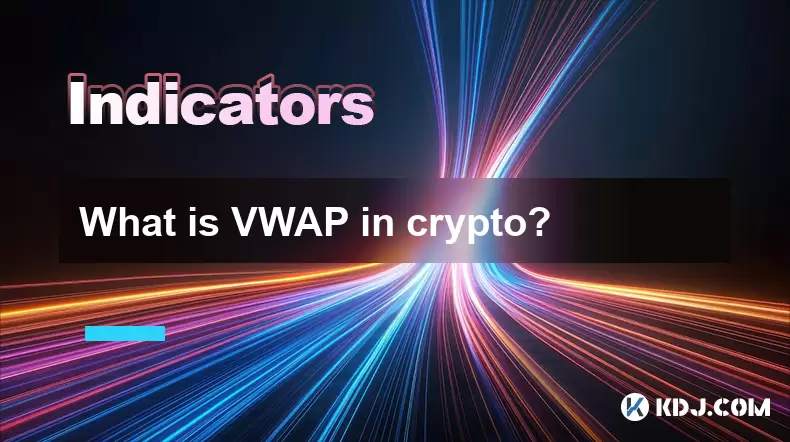
Understanding VWAP in Cryptocurrency
VWAP, which stands for Volume Weighted Average Price, is a crucial analytical tool used by traders in the cryptocurrency market to determine the average price of an asset based on both volume and price. This metric helps traders assess the true average cost of buying or selling a particular crypto asset over a specified time period. Unlike simple moving averages, VWAP gives more weight to periods with higher trading volumes, making it a more accurate reflection of market sentiment.
In crypto trading, where volatility can be extreme, VWAP acts as a benchmark for institutional and retail traders alike to evaluate whether they are getting a fair price during their trades.
How VWAP is Calculated
The formula for calculating VWAP involves two main components: price and volume. Here’s how it works:
For each time interval (e.g., 1 minute), calculate the typical price using the formula:
Typical Price = (High + Low + Close) / 3Multiply the typical price by the volume traded during that interval to get the Price × Volume value.
Sum up all the Price × Volume values over the selected period.
Separately sum up all the volume values over the same period.
Divide the total cumulative Price × Volume by the total volume to arrive at the VWAP.
This calculation resets at the beginning of each new trading session, which in crypto means it typically starts fresh every day due to the 24/7 nature of the market.
Using VWAP in Crypto Trading Strategies
Traders use VWAP in various ways depending on their strategy:
Trend Confirmation: When the price is above VWAP, it may indicate a bullish trend, while prices below VWAP could signal bearish momentum.
Entry and Exit Points: Traders often look to buy when the price is near or slightly below VWAP, considering it a value area. Conversely, selling near or slightly above VWAP might be seen as a favorable exit point.
Support and Resistance Levels: In many cases, VWAP acts as a dynamic support or resistance level. If the price pulls back to VWAP after a rally, it can serve as a re-entry opportunity.
It's important to note that VWAP should not be used in isolation but rather in combination with other indicators like RSI, MACD, or moving averages to enhance accuracy.
Differences Between VWAP and Moving Averages
While VWAP and Moving Averages (MA) may appear similar at first glance, there are key differences:
Weighting Mechanism: VWAP incorporates volume into its calculation, giving more significance to periods with high volume. Moving Averages, such as the Simple Moving Average (SMA) or Exponential Moving Average (EMA), do not consider volume in their calculations.
Reset Feature: VWAP resets daily, starting from zero at the beginning of a new trading session. Moving Averages are continuous and do not reset unless manually adjusted.
Application Context: VWAP is often used by large institutions to execute large orders without disrupting the market. Moving Averages are more commonly used by retail traders for identifying trends and potential reversals.
These distinctions make VWAP particularly useful in fast-moving crypto markets, where volume plays a significant role in price discovery.
Implementing VWAP on Trading Platforms
Most modern trading platforms like TradingView, Binance, or Bybit allow users to add VWAP directly onto their charts. Here’s how you can set it up:
Open your preferred trading platform and navigate to the chart of the cryptocurrency you're analyzing.
Click on the indicators or studies section.
Search for "VWAP" in the list of available indicators.
Select it and apply it to the chart.
Some platforms also allow customization, such as adjusting the time frame or overlaying multiple VWAP lines for different sessions. It’s essential to understand how your specific platform calculates and displays VWAP, especially if you’re using it for algorithmic or high-frequency trading strategies.
Common Misconceptions About VWAP in Crypto
There are several misunderstandings surrounding the use of VWAP in cryptocurrency:
Myth: VWAP is only for institutional traders – While it's widely used by large players, retail traders can benefit significantly from VWAP, especially when managing entry and exit points.
Myth: VWAP guarantees profitable trades – Like any technical indicator, VWAP does not predict the future. It reflects past data and should be used alongside other tools and risk management practices.
Myth: VWAP works equally well across all time frames – Although VWAP can be applied to any time frame, it tends to be most effective on intraday charts like 1-minute, 5-minute, or 15-minute intervals, especially in highly liquid crypto pairs.
Understanding these nuances ensures traders don’t misuse VWAP or place undue reliance on it as a standalone decision-making tool.
Frequently Asked Questions (FAQs)
- Can VWAP be used for long-term crypto investing?
While **VWAP** is primarily designed for short-term trading, some investors incorporate it into broader analysis frameworks. However, due to its daily reset and sensitivity to intraday movements, it's less suited for long-term investment decisions. - Is VWAP reliable in low-volume crypto assets?
In low-volume cryptocurrencies, **VWAP can become skewed or misleading** because fewer trades influence the average disproportionately. Traders should exercise caution and verify results with additional tools. - Does VWAP work better on certain exchanges?
The reliability of **VWAP depends more on the liquidity of the trading pair than the exchange itself**. Highly liquid pairs on major exchanges like Binance or Coinbase tend to produce more accurate **VWAP readings**. - How often should I check VWAP during a trading session?
Since **VWAP updates dynamically throughout the trading session**, it’s best monitored in real-time, especially during active trading hours. Many traders keep it visible on their dashboards for continuous reference.
Disclaimer:info@kdj.com
The information provided is not trading advice. kdj.com does not assume any responsibility for any investments made based on the information provided in this article. Cryptocurrencies are highly volatile and it is highly recommended that you invest with caution after thorough research!
If you believe that the content used on this website infringes your copyright, please contact us immediately (info@kdj.com) and we will delete it promptly.
- Score Big This Season with the BetMGM Bonus Code: Your Ticket to MLB Bonus Bets!
- 2025-07-24 06:50:12
- Bitcoin: From Digital Gold Rush to Evolving Asset Class
- 2025-07-24 06:50:12
- Shiba Inu's $1 Dream: Major Hurdles and Community-Driven Hope
- 2025-07-24 06:30:13
- Ethereum, Altcoins, and BlockDAG: Navigating the Crypto Landscape
- 2025-07-24 06:30:13
- Dogecoin's Resistance Retest: Parabolic Move on the Horizon?
- 2025-07-24 04:50:13
- WLFI, Vaulta Token, and Holdings: Navigating the Web3 Revolution
- 2025-07-24 05:30:13
Related knowledge
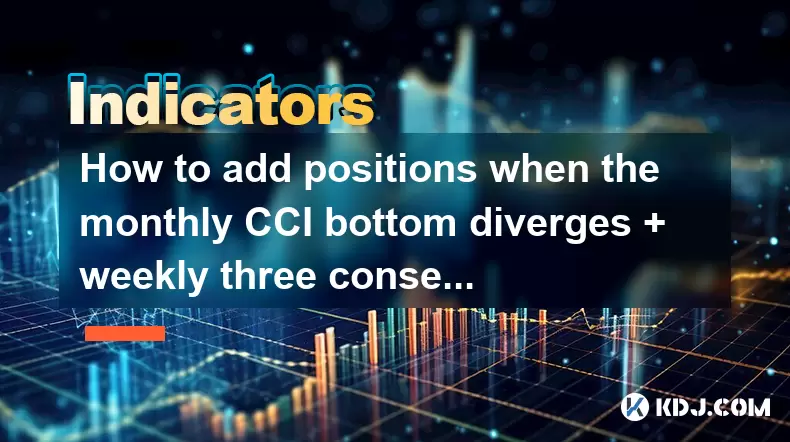
How to add positions when the monthly CCI bottom diverges + weekly three consecutive Yang + daily line gap is not filled?
Jul 24,2025 at 05:22am
Understanding the Monthly CCI Bottom DivergenceWhen analyzing the monthly CCI bottom divergence, traders are identifying a potential reversal signal i...
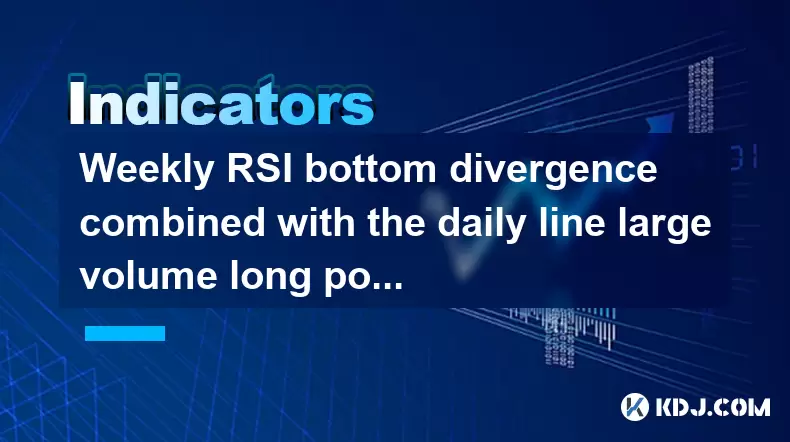
Weekly RSI bottom divergence combined with the daily line large volume long positive start signal
Jul 24,2025 at 05:28am
Understanding RSI Bottom Divergence in Cryptocurrency TradingIn the context of cryptocurrency trading, RSI bottom divergence is a powerful technical s...
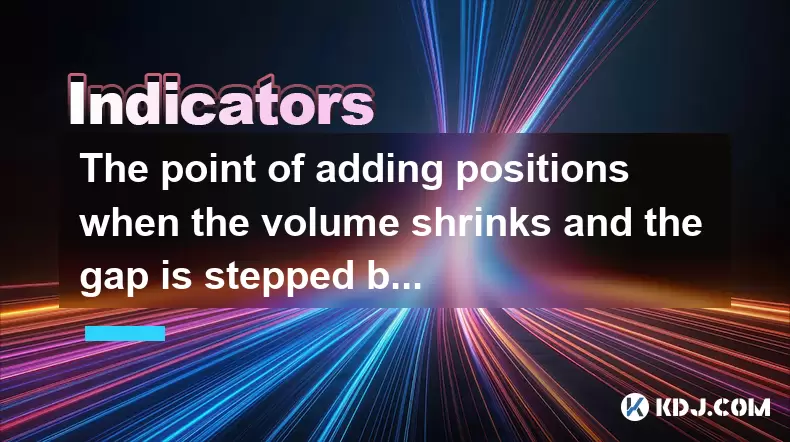
The point of adding positions when the volume shrinks and the gap is stepped back after the gap is jumped
Jul 24,2025 at 04:56am
Understanding the Gap Jump Phenomenon in Cryptocurrency TradingIn cryptocurrency trading, a gap jump occurs when the price of a digital asset opens si...
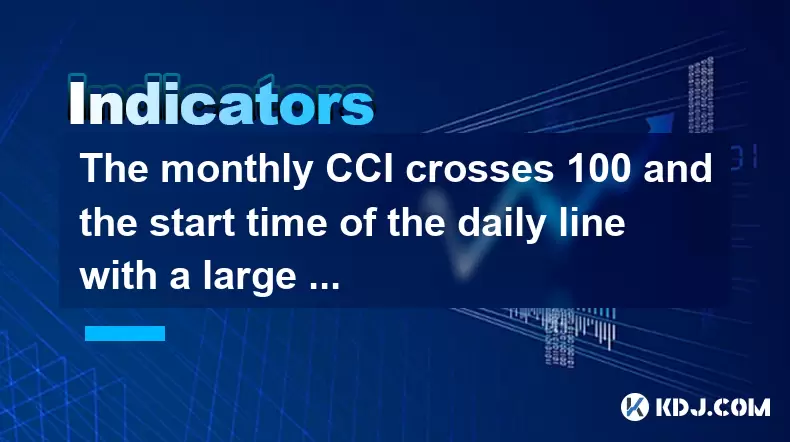
The monthly CCI crosses 100 and the start time of the daily line with a large volume positive line
Jul 24,2025 at 03:56am
Understanding the Monthly CCI Indicator and Its Significance at 100The Commodity Channel Index (CCI) is a momentum-based oscillator used to identify o...
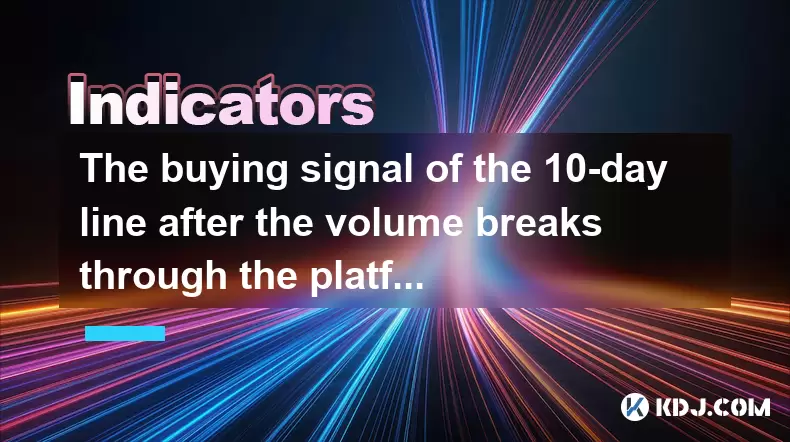
The buying signal of the 10-day line after the volume breaks through the platform
Jul 24,2025 at 06:00am
Understanding the 10-Day Moving Average in Cryptocurrency TradingIn cryptocurrency trading, moving averages are essential tools for identifying trends...
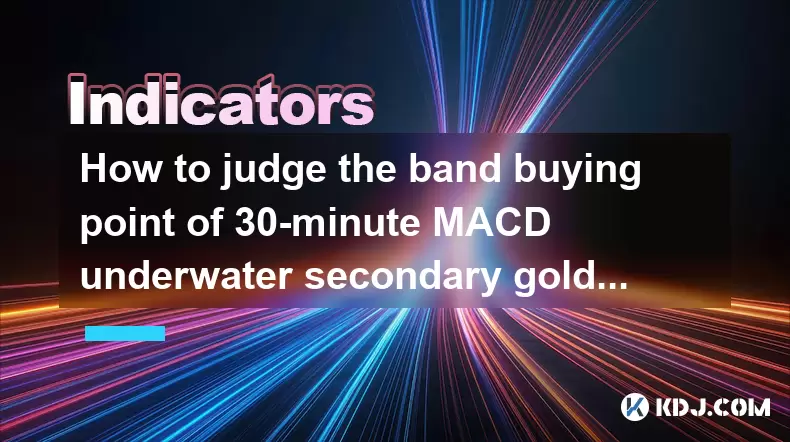
How to judge the band buying point of 30-minute MACD underwater secondary golden cross + 1-hour Yang line reverse?
Jul 24,2025 at 03:22am
Understanding the 30-Minute MACD Underwater Secondary Golden CrossThe 30-minute MACD underwater secondary golden cross is a technical signal used by t...

How to add positions when the monthly CCI bottom diverges + weekly three consecutive Yang + daily line gap is not filled?
Jul 24,2025 at 05:22am
Understanding the Monthly CCI Bottom DivergenceWhen analyzing the monthly CCI bottom divergence, traders are identifying a potential reversal signal i...

Weekly RSI bottom divergence combined with the daily line large volume long positive start signal
Jul 24,2025 at 05:28am
Understanding RSI Bottom Divergence in Cryptocurrency TradingIn the context of cryptocurrency trading, RSI bottom divergence is a powerful technical s...

The point of adding positions when the volume shrinks and the gap is stepped back after the gap is jumped
Jul 24,2025 at 04:56am
Understanding the Gap Jump Phenomenon in Cryptocurrency TradingIn cryptocurrency trading, a gap jump occurs when the price of a digital asset opens si...

The monthly CCI crosses 100 and the start time of the daily line with a large volume positive line
Jul 24,2025 at 03:56am
Understanding the Monthly CCI Indicator and Its Significance at 100The Commodity Channel Index (CCI) is a momentum-based oscillator used to identify o...

The buying signal of the 10-day line after the volume breaks through the platform
Jul 24,2025 at 06:00am
Understanding the 10-Day Moving Average in Cryptocurrency TradingIn cryptocurrency trading, moving averages are essential tools for identifying trends...

How to judge the band buying point of 30-minute MACD underwater secondary golden cross + 1-hour Yang line reverse?
Jul 24,2025 at 03:22am
Understanding the 30-Minute MACD Underwater Secondary Golden CrossThe 30-minute MACD underwater secondary golden cross is a technical signal used by t...
See all articles

























































































